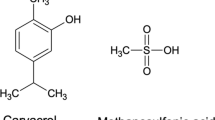Abstract
For quantification of overall fiber accessibility of lignocellulosic substrates, Direct Yellow 11 (C.I. 40000) is a suitable alternative to the discontinued Pylam Products’ dye Direct Orange 15 (C.I. 40002/40003). In this study we present a side-by-side comparison between the two azo-stilbene dyes. We characterize individual dye fractions and provide equations to determine individual concentrations. We present a modified Simons’ staining protocol incorporating the high molecular weight fraction of Direct Yellow 11. We perform tests on lignin, cellulosic, and lignocellulosic materials. In all tests, the two dyes perform similarly and satisfy many accessibility measurement criteria. We demonstrate that the adsorption of Direct Yellow 11 onto a substrate correlates with that substrate’s propensity for enzymatic hydrolysis. We confirm this correlation on a series of organic solvent pretreatments and on a series of lignocellulosic substrates. Finally, we outline the inherent limitations of performing adsorption experiments with Direct Yellow 11 and other high molecular weight dyes.






Similar content being viewed by others
References
Abuja PM, Schmuck M, Pilz I, Tomme P, Claeyssens M, Esterbauer H (1988) Structural and functional domains of cellobiohydrolase I from Trichoderma reesei. Eur Biophys J 15(6):339–342
Chandra RP, Saddler JN (2012) Use of the Simons’ staining technique to assess cellulose accessibility in pretreated substrates. Ind Biotechnol 8(4):230–237
Chandra RP, Ewanick S, Hsieh C, Saddler JN (2008) The characterization of pretreated lignocellulosic substrates prior to enzymatic hydrolysis, part 1: a modified Simons’ staining technique. Biotechnol Prog 24(5):1178–1185
Chandra RP, Arantes V, Saddler JN (2015) Steam pretreatment of agricultural residues facilitates hemicellulose recovery while enhancing enzyme accessibility to cellulose. Bioresour Technol 185:302–307
Chen Y, Wang Y, Wan J, Ma Y (2010) Crystal and pore structure of wheat straw cellulose fiber during recycling. Cellulose 17(2):329–338
Gourlay K, Arantes V, Saddler JN (2012) Use of substructure-specific carbohydrate binding modules to track changes in cellulose accessibility and surface morphology during the amorphogenesis step of enzymatic hydrolysis. Biotechnol Biofuels 5:51
Hall M, Bansal P, Lee JH, Realff MJ, Bommarius AS (2010) Cellulose crystallinity–a key predictor of the enzymatic hydrolysis rate. FEBS J 277(6):1571–1582
Inglesby MK, Zeronian SH (1996) The accessibility of cellulose as determined by dye adsorption. Cellulose 3(1):165–181
Luo Z, Zhu JY (2011) Effects of drying-induced fiber hornification on enzymatic saccharification of lignocelluloses. Enzyme Microb Technol 48(1):92–99
Meng X, Ragauskas AJ (2014) Recent advances in understanding the role of cellulose accessibility in enzymatic hydrolysis of lignocellulosic substrates. Curr Opin Biotechnol 27:150–158
Miller GL (1959) Use of dinitrosalicylic acid reagent for determination of reducing sugar. Anal Chem 31(3):426–428
Novozymes A/S (2010) Cellic® CTec2 and HTec2-enzymes for hydrolysis of lignocellulosic materials, Applications Report No. 2010-01668-01. Novozymes, Bagsvaerd
Shuai L, Luterbacher J (2016) Organic solvent effects in biomass conversion reactions. ChemSusChem 9(2):133–155
Simitzis J, Sfyrakis J, Faliagas A (1995) Characterization of pore structure by porosimetry and sorption on adsorbents produced from novolac-biomass. Mater Chem Phys 41(4):245–250
Simons FL (1950) A stain for use in the microscopy of beaten fibers. TAPPI 33(7):312–314
Smith RE (2000) Stilbene dyes. Kirk-Othmer encyclopedia of chemical technology. Wiley, New York. doi:10.1002/0471238961.1920091219130920.a01
Stone JE, Scallian AM (1969) Digestibility as a simple function of a molecule of a similar size to a cellulase enzyme. Adv Chem Ser 95:219–224
TAPPI useful method UM256 (1981) Water retention value (WRV). TAPPI useful methods. TAPPI Press, Atlanta
Wang QQ, He Z, Zhu Z, Zhang YH, Ni Y, Luo XL, Zhu JY (2012) Evaluations of cellulose accessibilities of lignocelluloses by solute exclusion and protein adsorption techniques. Biotechnol Bioeng 109(2):381–389
White AR, Brown RM (1981) Enzymatic hydrolysis of cellulose: visual characterization of the process. Proc Natl Acad Sci 78(2):1047–1051
Yu X, Minor JL, Atalla R (1995) Mechanism of action of Simons’ stain. Tappi J 78:175–180
Zhang Z, Vancov T, Mackintosh S, Basu B, Lali A, Qian G, Hobson P, Doherty WO (2016) Assessing dilute acid pretreatment of different lignocellulosic biomasses for enhanced sugar production. Cellulose 23(6):3771–3783
Zhao X, Zhang L, Liu D (2012) Biomass recalcitrance. Part I: the chemical compositions and physical structures affecting the enzymatic hydrolysis of lignocellulose. Biofuels Bioprod Biorefin 6(4):465–482
Acknowledgments
This work was funded by a PSE Fellowship from the Renewable Bioproducts Institute (RBI) at the Georgia Institute of Technology. Special thanks to “The Lignin Group” at Georgia Tech. A Presidential Undergraduate Research Award from Georgia Tech to D.N.F. is gratefully acknowledged.
Author information
Authors and Affiliations
Corresponding author
Ethics declarations
Conflict of interest
The authors declare that they have no conflict of interest.
Electronic supplementary material
Below is the link to the electronic supplementary material.
Rights and permissions
About this article
Cite this article
Kwok, T.T., Fogg, D.N., Realff, M.J. et al. Applying Direct Yellow 11 to a modified Simons’ staining assay. Cellulose 24, 2367–2373 (2017). https://doi.org/10.1007/s10570-017-1269-y
Received:
Accepted:
Published:
Issue Date:
DOI: https://doi.org/10.1007/s10570-017-1269-y




